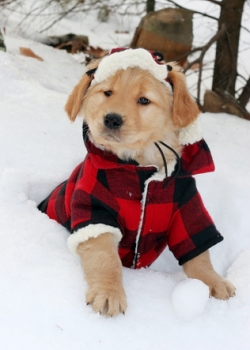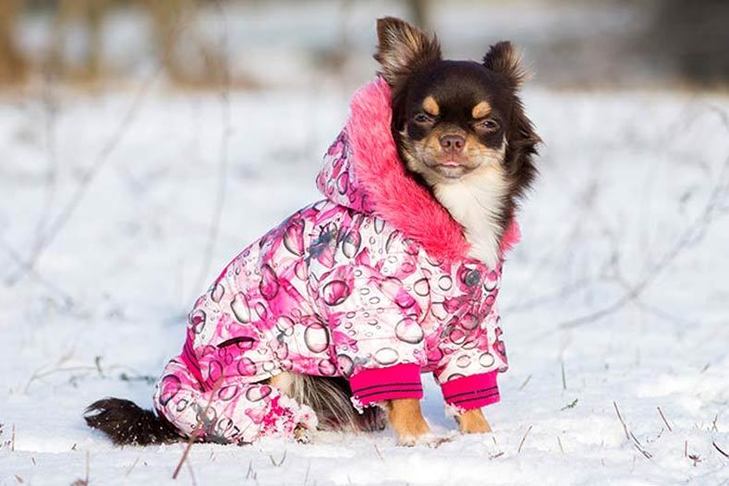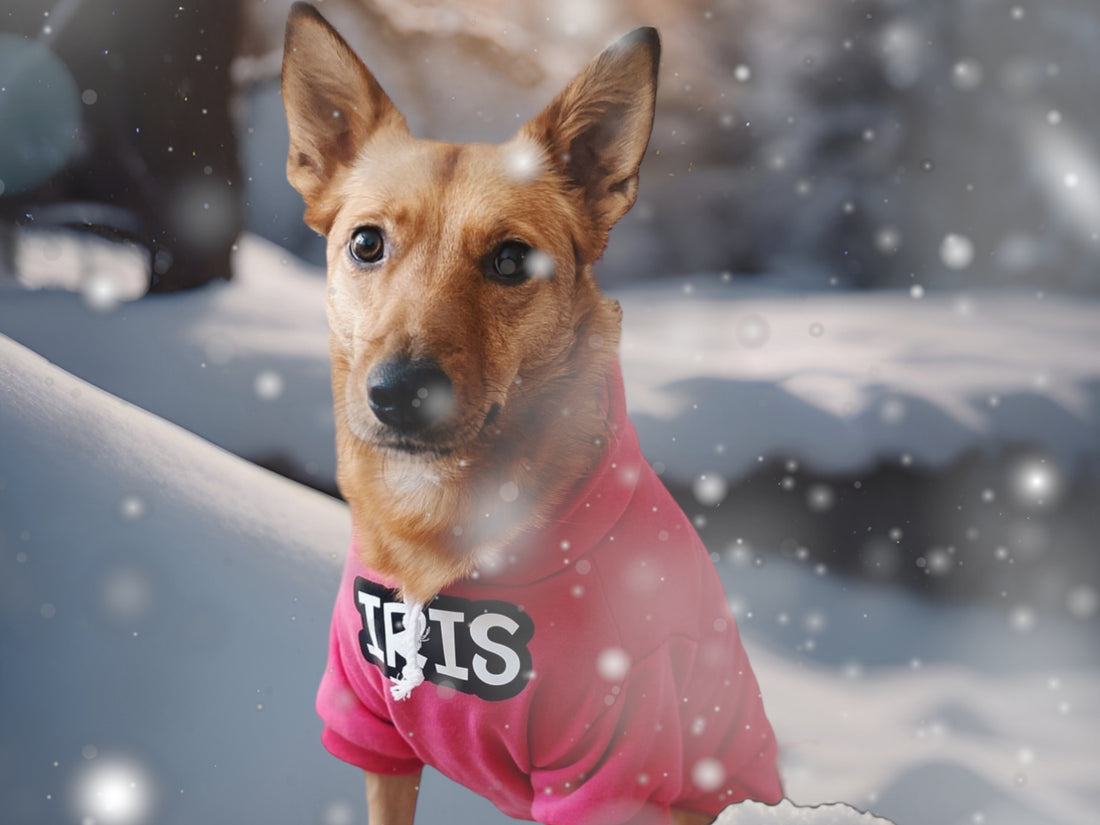Have you ever wondered why some dogs wear coats in the winter while others seem perfectly content in the cold? The thought of dressing a dog in a tiny jacket might initially sound like material for a pet fashion show, but there’s more to the story. Dog coats aren’t just about style; they play a crucial role in your pet’s health and comfort during the colder months. Let’s unravel the mystery of why some dogs need coats in the winter.

The Science Behind Dog Coats
Anatomy and Fur Types
Dogs come in a wide range of breeds, each with its own unique coat type. From short-haired Chihuahua to the fluffy Shih Tzu, a dog’s coat is designed by nature to serve specific purposes. However, despite their natural insulation, not all dogs are equipped to handle cold weather.
Single vs. Double Coats
Dogs can have either single or double coats. A single coat features just one layer, which provides minimal insulation. Breeds with single coats, like Greyhounds or Whippets, tend to be more susceptible to the cold. In contrast, double-coated breeds, such as Siberian Huskies and Golden Retrievers, have both an undercoat and an outer coat, which together offer better protection against the elements.
| Coat Type | Examples | Cold-Winter Suitability |
|---|---|---|
| Single Coat | Greyhound, Whippet | Low |
| Double Coat | Siberian Husky, Golden Retriever | High |
Natural Protection vs. Modern Living
While nature designed some dog coats to fend off the cold, our modern lifestyles have changed the game. Most dogs today live in temperature-controlled environments, which makes their natural cold resistance less effective. Hence, they need additional protection when they step outside in freezing temperatures.
Identifying Dogs That Need Winter Coats
Breeds More Susceptible to Cold
Several dog breeds are more sensitive to cold weather due to their thin coats and lean bodies. These include:
- Greyhounds
- Whippets
- Chihuahuas
- Dachshunds
- Boxers
Age and Health Considerations
Puppies, older dogs, and dogs with certain health conditions are more vulnerable to cold weather. Younger dogs have an underdeveloped immune system, while older dogs may struggle with conditions like arthritis, making them more sensitive to cold.
Signs Your Dog Needs Extra Warmth
Your dog might be trying to tell you they are cold without saying a word. Obvious signs include:
- Shivering or shaking
- Whining or showing discomfort
- Seeking warm places to curl up
- Feeling cold to the touch, especially ears and paws
Choosing the Right Coat
Material Matters
Dog coats come in a plethora of materials, each suited to different weather conditions. The material of the coat can make a significant difference in your dog’s comfort.
Types of Fabrics
- Fleece: Provides good insulation, ideal for dry, cold conditions.
- Waterproof Fabrics: Necessary for snowy or rainy conditions.
- Insulated Coats: Often feature materials like Thinsulate, offering excellent warmth.
Fit and Function
A poorly fitting coat can be just as ineffective as no coat at all. Ensure the coat you choose is easy to put on and take off and allows your dog to move freely. Measure your dog’s back length, chest, and neck to ensure a proper fit.
| Measurement | How to Measure |
|---|---|
| Back Length | From the base of the neck to the tail |
| Chest Girth | Around the widest part of the chest |
| Neck Circumference | Around the thickest part of the neck |
Getting Your Dog Used to a Coat
Start Small
If your dog isn’t used to wearing clothes, start with short, positive experiences. Let them sniff and explore the coat before attempting to dress them. Gradually increase the amount of time they wear the coat indoors before transitioning to wearing it outside.
Positive Reinforcement
Positive reinforcement is crucial. Offer treats, praise, and reassurance when your dog is wearing the coat. This creates a positive association and helps reduce anxiety or reluctance.
Observe Behavior
Monitor your dog’s behavior to ensure they are comfortable. If they are scratching, trying to remove the coat, or acting unusually, they might need a different size or style. Don’t force them to wear something that clearly makes them uncomfortable.

Additional Winter Care Tips
Proper Grooming
Cold weather doesn’t mean you should neglect your dog’s grooming needs. In fact, regular grooming can help maintain the health and effectiveness of their coat.
Brushing
Regular brushing removes loose fur and helps distribute natural oils, keeping the coat healthy and insulating.
Bathing
Limit baths during the winter, as frequent bathing can strip the coat of essential oils. Use a moisturizing shampoo to avoid dry skin and hair.
Paw Protection
The winter months can be harsh on your dog’s paws. Salt and chemicals used to melt snow can irritate their paws, and ice can cause cuts or injuries.
- Booties: Consider using booties to protect your dog’s paws from the elements.
- Paw Balm: Use a paw balm to moisturize and protect the pads.
Hydration and Nutrition
Cold weather can dehydrate your dog, so ensure they have access to fresh water at all times. Additionally, monitor their diet to ensure they’re getting enough calories to maintain their energy and body heat.
The Emotional Aspect: Ensuring Your Dog Feels Secure
The Comfort of Familiarity
Dogs are creatures of habit who find comfort in familiar routines and objects. Wearing a coat that smells like home can provide them with an additional sense of security when venturing out into the cold.
Socializing in Style
Dog coats can be more than just functional. They can be a conversation starter and a way to make your dog feel included in social outings. A coat gives your pet a stylish edge while keeping them comfortable.
Bonding Through Care
Dressing your dog in a coat isn’t merely a task; it’s an act of love and care. The time you spend ensuring your dog is warm and comfortable can strengthen the bond you share.

Debunking Myths About Dog Coats
Dogs Natural Insulation is Enough
One common misconception is that dogs don’t need coats because they already have fur. Despite their natural insulation, many dogs still require additional protection in extremely cold conditions, especially those with single coats or specific health issues.
Coats can Overheat Dogs
While it’s important to avoid overheating, most dog coats are designed with breathable materials. Monitor your dog to ensure they are not showing signs of overheating, such as excessive panting, and always choose coats appropriate for the weather conditions.
More Harmless Myths
Some people think dog coats are purely for aesthetics or that dogs find them uncomfortable. In reality, a well-fitting, appropriately chosen coat can significantly enhance a dog’s comfort and well-being during the winter months.
Conclusion
Dressing your dog in a winter coat goes beyond making a fashion statement. It’s about ensuring their comfort, health, and well-being through the colder months. Different breeds, ages, and health conditions determine the necessity for extra warmth. While selecting the right coat involves considering fabric, fit, and function, acclimating your dog to wear it requires patience and positive reinforcement.
By addressing these considerations, you’re not just investing in a piece of pet apparel—you’re enhancing your dog’s quality of life. When your furry friend steps out in their new winter coat, you’ll both be better for it. So next time you see a dog sporting a snazzy jacket, remember: it’s not just about style; it’s about really loving your pet.

